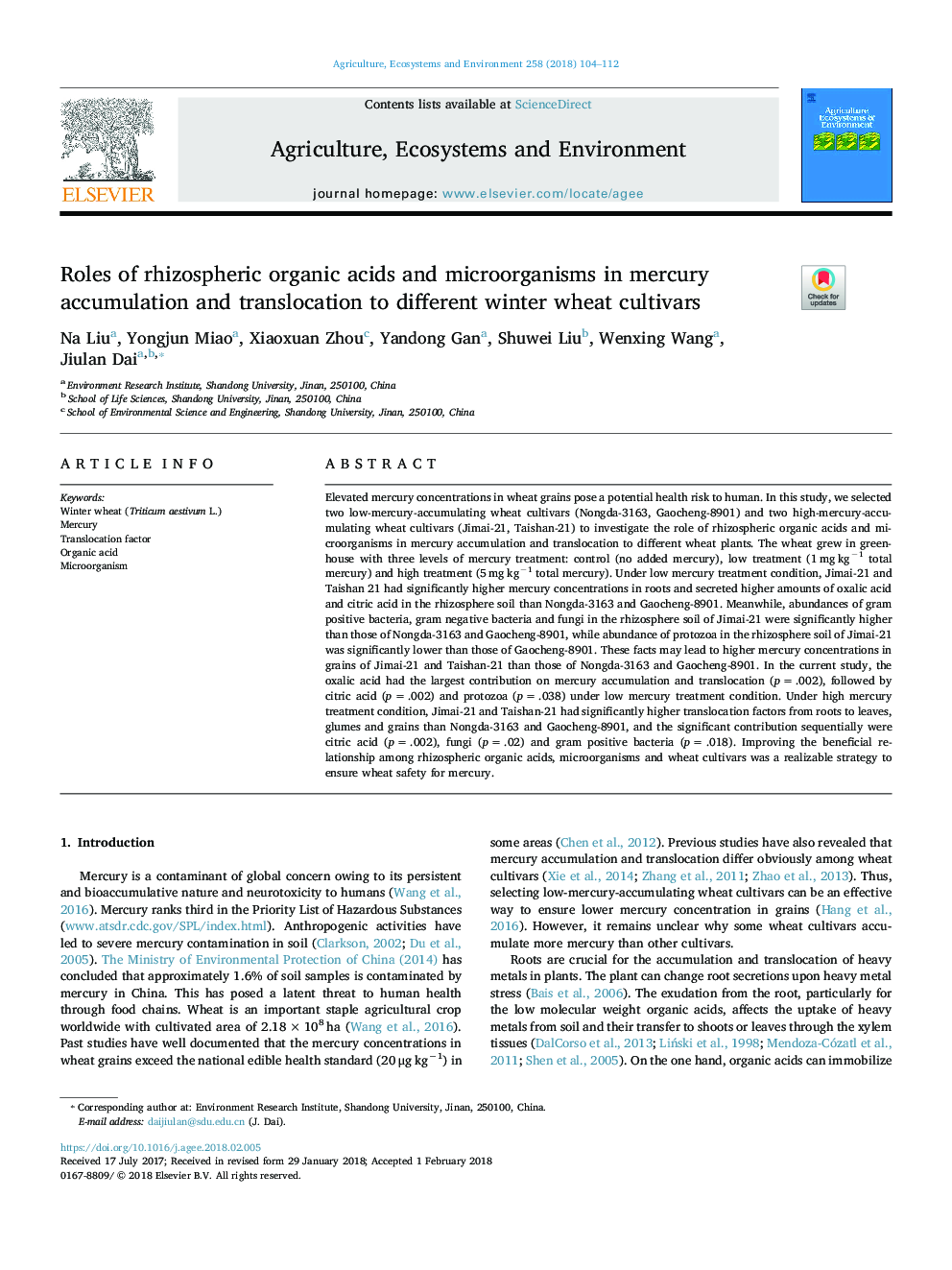| Article ID | Journal | Published Year | Pages | File Type |
|---|---|---|---|---|
| 8487119 | Agriculture, Ecosystems & Environment | 2018 | 9 Pages |
Abstract
Elevated mercury concentrations in wheat grains pose a potential health risk to human. In this study, we selected two low-mercury-accumulating wheat cultivars (Nongda-3163, Gaocheng-8901) and two high-mercury-accumulating wheat cultivars (Jimai-21, Taishan-21) to investigate the role of rhizospheric organic acids and microorganisms in mercury accumulation and translocation to different wheat plants. The wheat grew in greenhouse with three levels of mercury treatment: control (no added mercury), low treatment (1â¯mgâ¯kgâ1 total mercury) and high treatment (5â¯mgâ¯kgâ1 total mercury). Under low mercury treatment condition, Jimai-21 and Taishan 21 had significantly higher mercury concentrations in roots and secreted higher amounts of oxalic acid and citric acid in the rhizosphere soil than Nongda-3163 and Gaocheng-8901. Meanwhile, abundances of gram positive bacteria, gram negative bacteria and fungi in the rhizosphere soil of Jimai-21 were significantly higher than those of Nongda-3163 and Gaocheng-8901, while abundance of protozoa in the rhizosphere soil of Jimai-21 was significantly lower than those of Gaocheng-8901. These facts may lead to higher mercury concentrations in grains of Jimai-21 and Taishan-21 than those of Nongda-3163 and Gaocheng-8901. In the current study, the oxalic acid had the largest contribution on mercury accumulation and translocation (pâ¯=â¯.002), followed by citric acid (pâ¯=â¯.002) and protozoa (pâ¯=â¯.038) under low mercury treatment condition. Under high mercury treatment condition, Jimai-21 and Taishan-21 had significantly higher translocation factors from roots to leaves, glumes and grains than Nongda-3163 and Gaocheng-8901, and the significant contribution sequentially were citric acid (pâ¯=â¯.002), fungi (pâ¯=â¯.02) and gram positive bacteria (pâ¯=â¯.018). Improving the beneficial relationship among rhizospheric organic acids, microorganisms and wheat cultivars was a realizable strategy to ensure wheat safety for mercury.
Related Topics
Life Sciences
Agricultural and Biological Sciences
Agronomy and Crop Science
Authors
Na Liu, Yongjun Miao, Xiaoxuan Zhou, Yandong Gan, Shuwei Liu, Wenxing Wang, Jiulan Dai,
